HP Mixed Reality Headset - An in-depth review
HP Mixed Reality Headset - An in-depth review
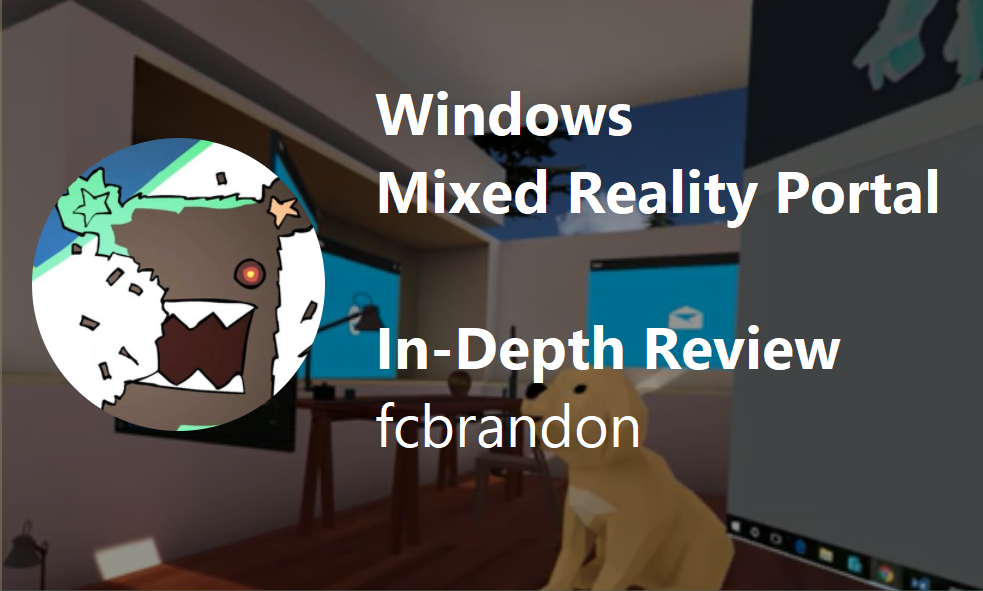
As a big fan of VR, I was quite excited to see a new wave of headsets on the horizon, namely the so called 'Windows Mixed Reality' headset, which were promising higher resolution screens, no external sensors, and most importantly, price points around $300. They are, however, being billed as 'dev only' devices. As I was a supporter on the Kickstarter for the original Oculus Rift Devkit, I thought this would be something I could handle and looked forward to getting the device early in its lifecycle. I got in the headset earlier this week, so let's talk about how it pans out in reality.
Below I have a detailed description of the experience, but here's the tl;dr: Unless you're actually, honestly, only going to use this for development, skip it - at the moment you can't use them for anything else. These are truly Dev-only devices. :/ Read-on to get more details though :)
I tested the headset on my Razer Blade with an Nvidia GTX 1060 and my desktop with an Nvidia GTX 1080Ti and I had zero perfomance issues with either one. I didn't get a chance to test this on lower spec hardware, though Microsoft is claiming this will run on mainstream hardware without a problem.
Packaging
It came in a nice blue and white box. And that's about it really; the headsets were in a thin black cloth-like bag to offer some minimal protection. There's no instruction manual and no software. There is a cable included in the box, but really, there's not much here. As this kit is intended for developers, this is perfectly expected and acceptable.
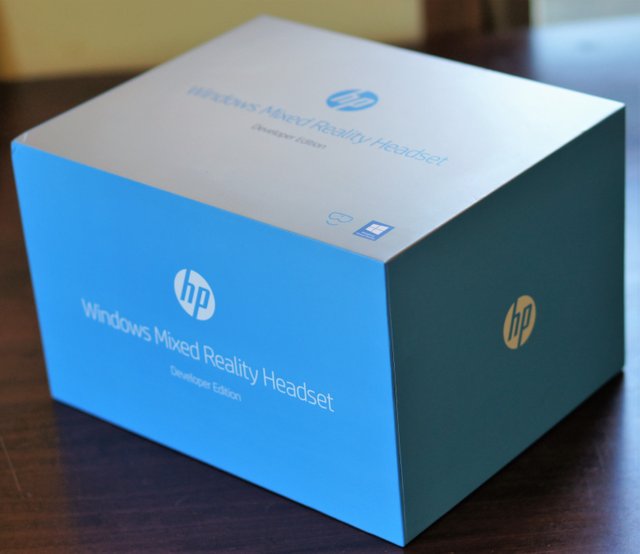

Hardware – Fit & Finish
Despite the relatively low price for this headset, the build quality was quote nice. The device had a nice finish with a dark-gray/light-black color with a slight bit of silver flake in the finish. On the unit I received, the seems were smooth and well fitted – I didn't noticed any left-over edges from the molding process. The materials feel nice to the touch and appear to be high quality. Despite being very light, the headset does feel very sturdy – there were no creaks or rattles when using the headset. There's also a hinge on the front where the visor connects to the headband - it looks robust and has a nice click sound when the visor is in its most upright position.
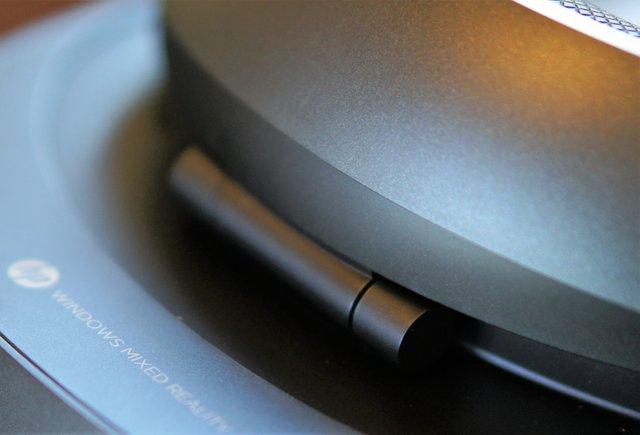
The straps are firmly attached and feel like they'll server their purpose well.
For a device intended for developers, it's certainly well made. One could complain about the amount of branding and logos printed on the outside of the device, but this is a minor quibble as it doesn't greatly distract from the overall appearance.
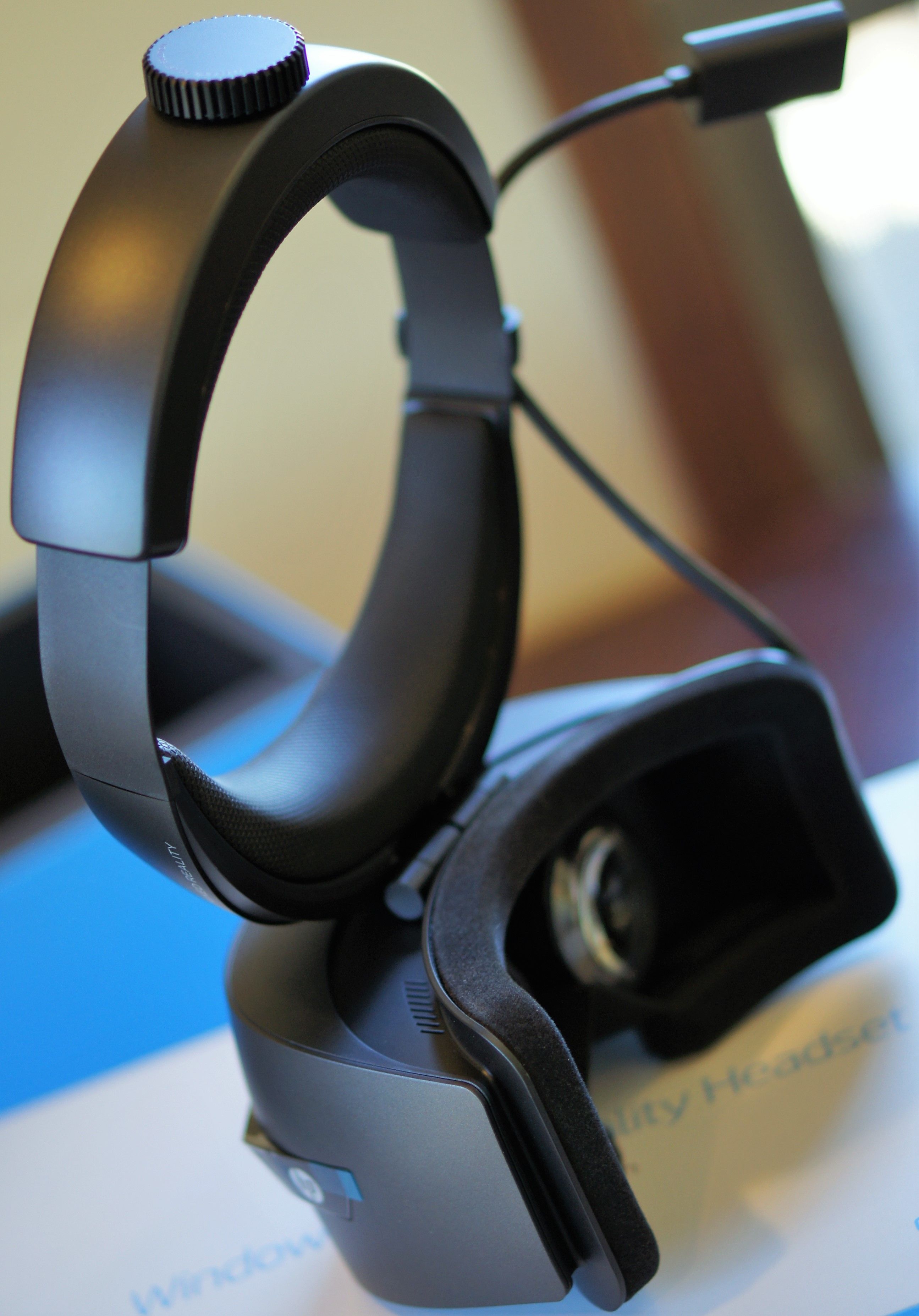
Connectors and Wires
Very briefly, I just wanted to touch on the connectors/cables for this headset. The Windwos Mixed Reality headset all look to use just a single cable out the back of the headset, wherein you connect what looks like a DisplayPort cable, which then splits out into HDMI and USB3.0 to be plugged into the PC. This is a much simpler setup than the other available options on the market today.
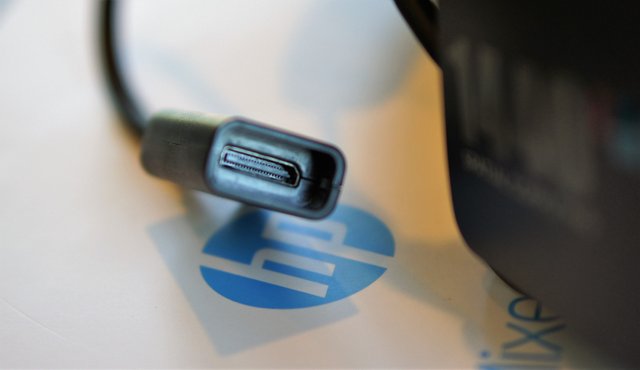
The cable include was about 10 feet (rough estimate) and breaks out o USB 3.0 and HDMI:
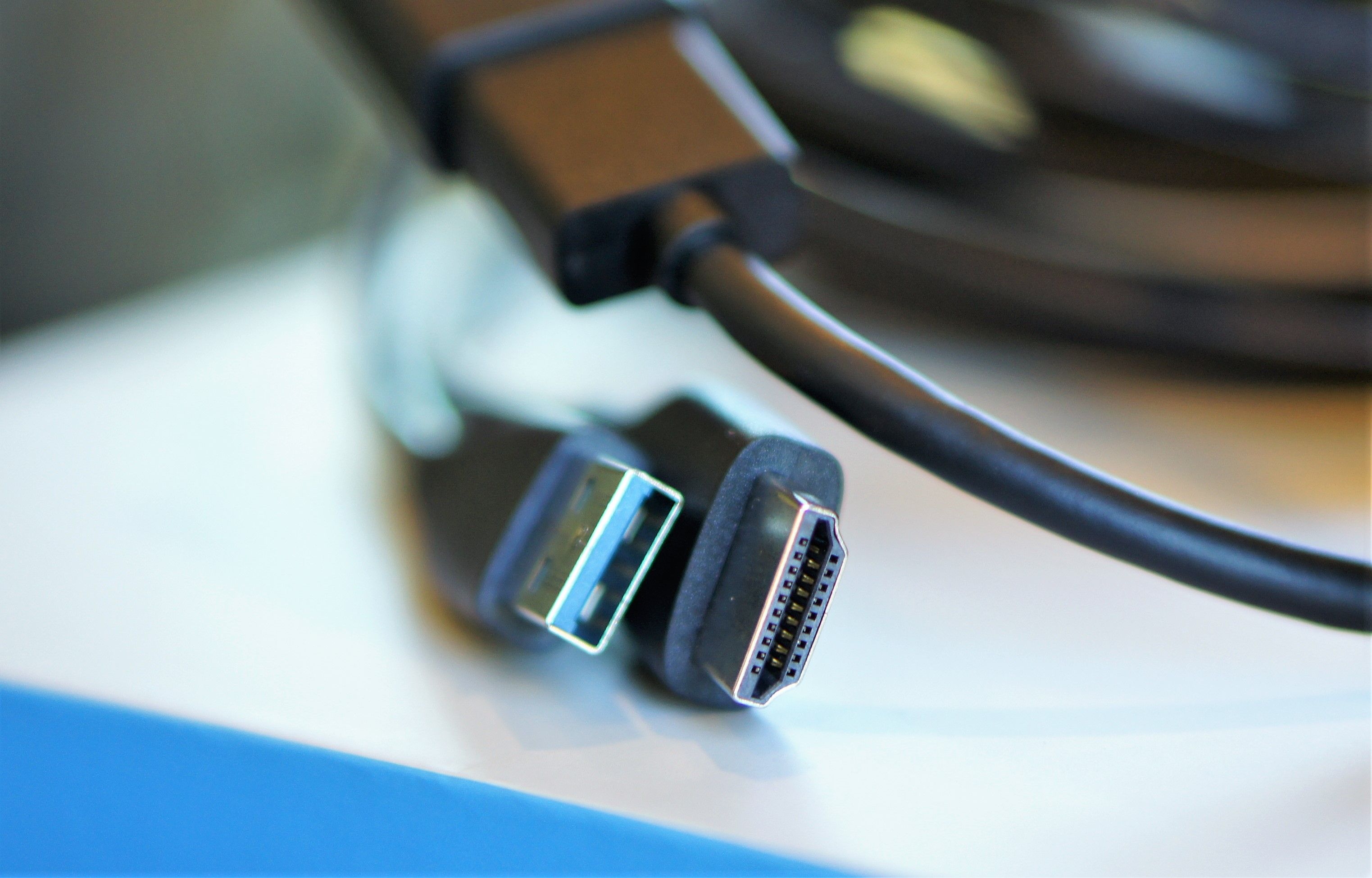
Displays
First up let's talk about the displays themselves. All of the 1st gen devices are spec'd as having 1440x1400 screens (I guess technically 2880x1440 total) which is a bump over the Oculus'/Vive's 1080 resolution. And it is indeed a noticable improvement! Screen-door effect, while still there, is greatly diminished. Finer details are noticeable, particualrly when looking at text. I'll speak more to the lens focus below, in the center of the field of view details are sharp and clear, so that browsing the web is totally feasible, using the command prompt is totally doable and I even tried some programming/writing with the headset on. Colors were great and brightness/contract were also good, without the brightness being uncomfortable.
The lens are where we being to see a major difference when compared to the Rift/Vive. All of these headsets' lenses are designed to have maximum detail right in the middle of the display, where humans will spends the majority of their time looking. This allows them to make the lenses at a lower cost (and potentially weight) by not having to deal with fighting the effects of distortion and clarity across the entire field of view. It's a problem on which all the headset maker spend a great deal of money and time to improve. With the HP MR headset however, the area of high focus is much smaller compared to the more expensive units. This is liveable for the majority of the time, but does make multitasking as you would with a normal monitor more difficult. For example, if you're writing code in one window, and just need to glance over at another window for reference material, it will be blurry; to fix the blurriness you will need to turn your entire head so that the center of the lens is focused on this section of your environment. Not a huge problem for gaming or maybe even watching movies, but certainly a challenge for any productivity based activities.
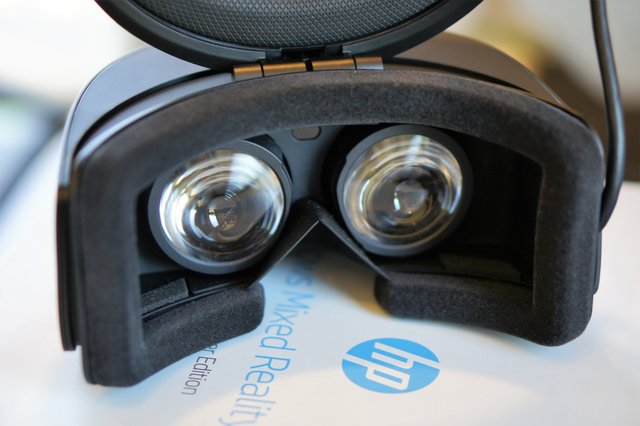
IPD Adjustment (or the lack thereof)
Interpupallary Distance (or IPD) is the measurement of how far apart a person's eyes are. Not everyone has the exact same IPD, and when you're talking about using lenses that are most in focus at the very center, then it's important to be able to make sure the lense are perfectly centered on your eyes. As such, both the Vive/Rift have physical IPD adjustments available in the headsets – meaning you can move the actual lenses in and out. Unfortunately, the HP headset (nor the Acer or Lenovo that I'm aware of) have any such adjustment. This means if your eyes are not exactly the same distance apart as the lenses in the display are, not everything will be clear. There is a way to adjust IPD in the Settings app in Windows, but it's very difficult to adjust with the headset not on your face, and with it on, it's incredibly uncomfortable (at least for me) to change this setting.
On a personal note, I'm extremely sensitve to lens distortion, especially when the distorion is not symmetrical in both eyes. Because of this, with the Windows MR headsets, like this one from HP, I am constantly fighting naseau induced by the perpetually asymmetric distortion due to the IPD not matching may eyes. There are folks out there whom seem completely immune from all effects of VR-sickness; for them, this may not be a problem, but I wanted to share this for those whom are also share my affliction :D
Audio
There is none! :D The headset does have a 3.5mm port underneath the left side of the headset to plug in your own set of headphone. You don't have to use the 3.5m, you can use bluetooth to you PC as well.
Comfort
HP advertises that this device was designed for all-day-wearing. The padding is quite comfortable; it's a definite upgrade from the Vive and the Rift, though each one of those is quite comfortable as well. The HP is incredibly light, so there's no neck strain from having the headset hanging off the front of your face. My wording here has been a bit too understated – this is the best padding on a headset yet.
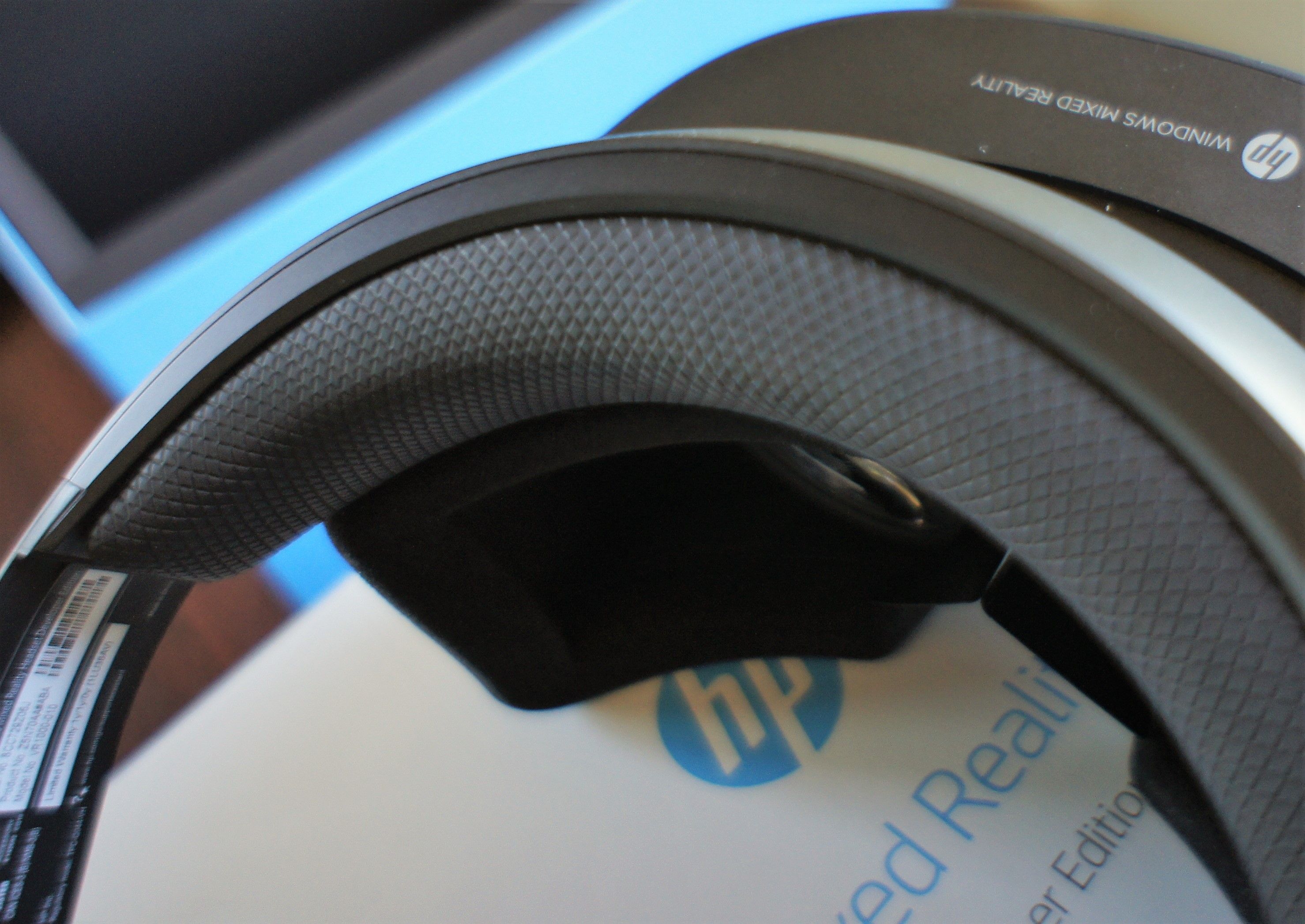
Here (below) you can see the nice pattern in the material - it looks like it might grip well, but it does only a moderate job in this regard.
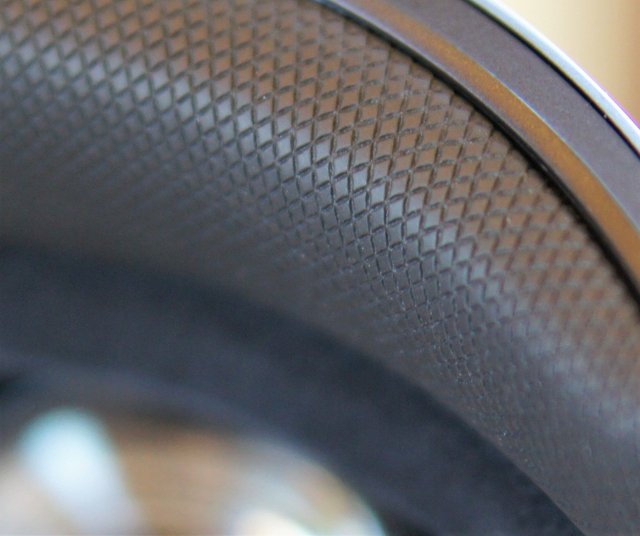
With the padding on the back being much the same:
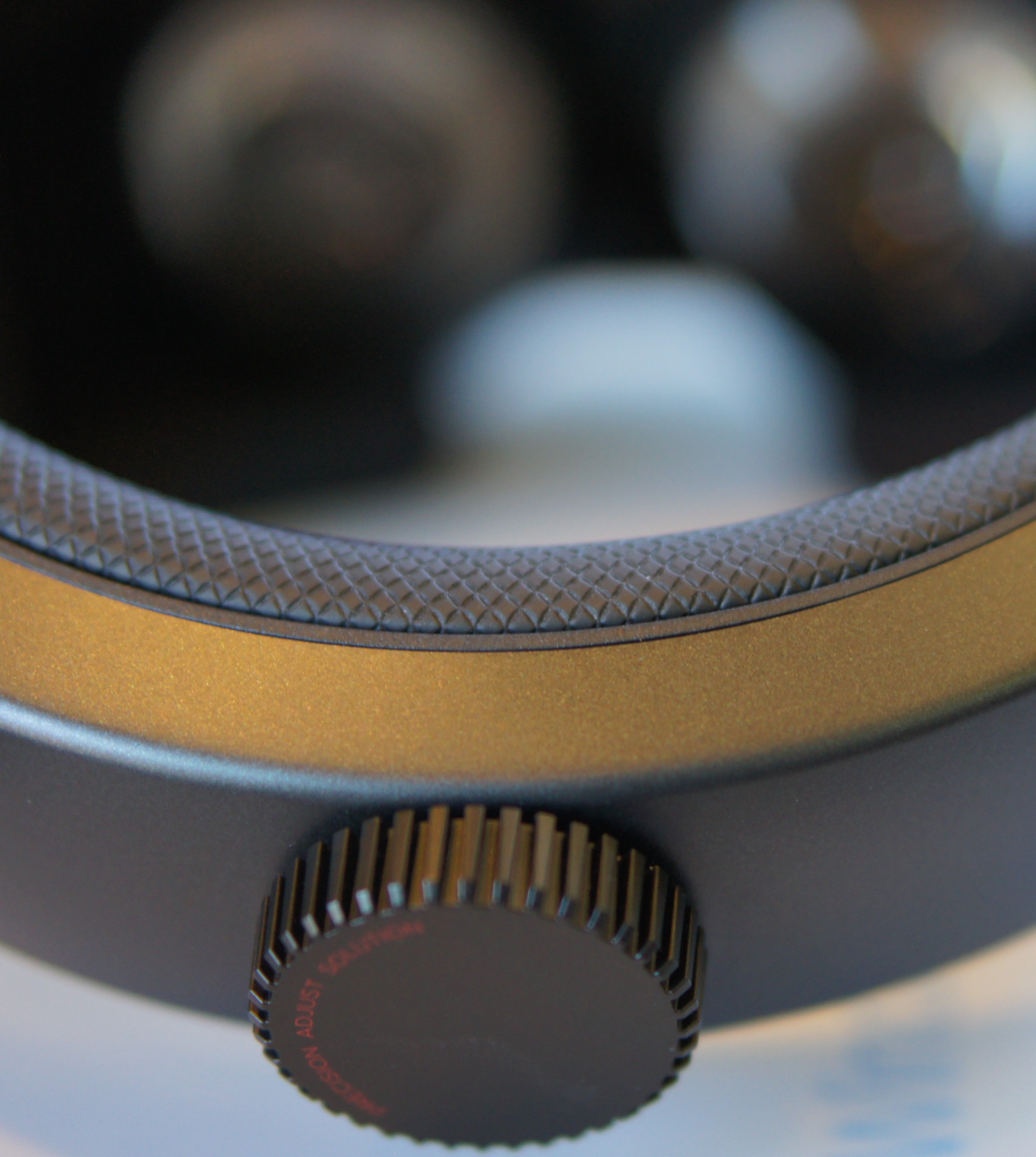
Padding aside however, this headset is not ready for all day wear, for two big reasons: heat and the headstrap. First off, almost all of the headsets out today have a heat problem. The displays in the units get warm when being used, and these displays are mere millimeters from your eyes. The warmth isn't noticeable immediately, but after a while your eyes get dry and hot from the exposure. The HP unit is no different, making it difficulty to wear all day. Second, the headstrap – it's pretty awful. It's not that the strap Is uncomfortable itself, but it does a poor job of keeping the deadset on your face, and makes it very difficult to center the device, especially if you have long hair. There is a knob on the back to adjust how firmly the headstrap squeezes onto your heard - the knob feels very sturdy with almost no wiggle and is easy to find behind your head. Nonetheless, without it being very uncomfortably tight, it the headset doesn't stay in place well.
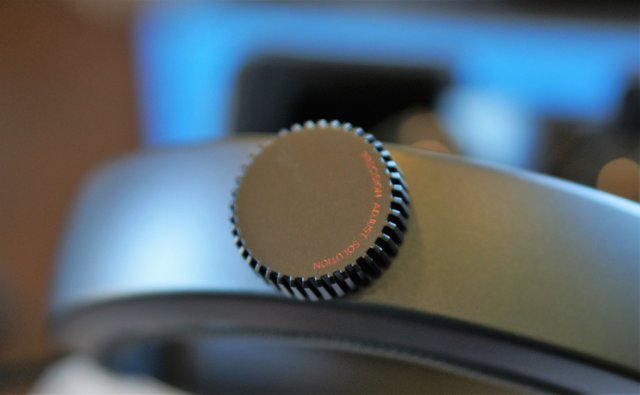
The Rift and the Vive both have a strap that goes over the top of your head – this keeps the rest of the headstrap from sliding down your hear, especially if you have low-friction hair. The Windows Mixed Reality headsets are missing this piece that goes over the top, so the back strap behind your head has a good chance to slide down. Without the headset being properly centered, you again run into the fidelity problem described above, because it can't be properly centered over your eyes.
Overall it is a pretty comfortable headset – I'd say keep the padding, and adopt a mounting system similar to those found on the HTC and Oculus.
Software
This is where we get to the part where we describe the headset as a developer only device. At the moment, Windows Mixed Reality devices are not supported by Steam or Oculus app. Unless you're writing your own games/apps, this will just be a novelty toy. As such, the only app you'll really be able to use is the Windows Mixed Reality Portal app (only in Windows 10 Creators Update as of this writing), wherein there's not much to do other than walk around a fancy house. Rather than type out >1000 words to descibe this experience, check out the video below to get the idea.
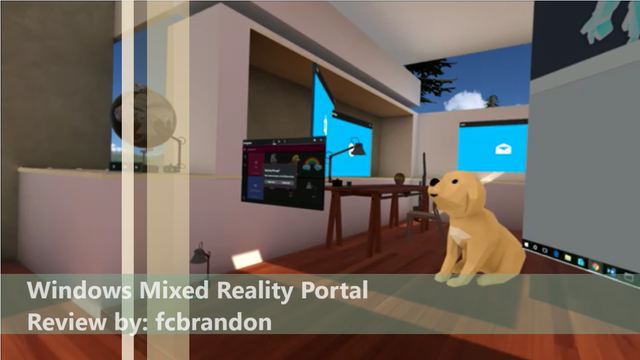 (https://spee.ch/a/winmrportalrecording-nativeres-unnarrated-fcbrandon.mp4)
(https://spee.ch/a/winmrportalrecording-nativeres-unnarrated-fcbrandon.mp4)(This video is hosted on Lbry - a whole blockchain dedicated to hosting video content. It's pretty cool, check it out at https://lbry.io)
As you can see, it’s a nice place to walk around, but it's really just a quick demo app, and not something that's meant to be enjoyed for any period of time. Rumor has it that a simple driver is the only thing that keeps the Windows MR devices from being used with more widely available software (I.e., Steam and Oculus portal).
Tracking
So a major part of these new Windows Mixed Reality headsets, to include this HP device, they use what is being marketed as "Inside Out" tracking, which just means these headsets don't need external sensors, the those required by the Oculus Rift and the HTC Vive. When you first setup the device, you'll go through a short process of using the headset to 'trace' out your available space (so you don't walk into your couch/table when the headset is on). I personally had a problem where the software forced me to re-run the setup several times a day. I'm sure this will be patched in the future, it's just a qurik of the software.
After the setup, the tracking works very well, surprisingly so actually. It tracks nearly as well as my Oculus Rift with 3 sensors, and supports full 360 degree tracking out of the box without any sensors. Those sensitive to tracking abberations (like myself) may notice just the slightest jerkiness or low-fidelity tracking on the rare occasion, but it was never jarring or nausea inducing. I was perfectly happy with the results as they are today, and any improvements would just be icing on that cake.
I did notice some other review complaining about the device's ability to track the floor; I don't specifically know what is causing the issues in those reviews, but I did notice a potential issue that would cause this. When setting up the headset, you are asked to enter your height, and then hold the device at eye level for 10 seconds while it calibrates. If you get this wrong by a few inches, or hand it off to someone else whom's height is different than your own, I suspect this cuase problems with the software being able to accurately identify the floor. I personally don't spend a lot of time with my face on the floor when in VR, so this seems like a minor issue.
Controllers
There are none! :D There are controllers in development and have seen them in testing at various development studios. I can't speak to them, and will refrain from doing so.
However, without controllers, it's a huge step back from being able to see your hands in VR. Having hand controllers is what pushed me over the fence on whether or not to get a VR headset. Without them, it's a very very different experience when using the headset. I would consider them mandatory for a proper experience and would recommend everyone get controllers with their headsets.
Final Thoughts
If you're not an actual developer with the intent to use these for development, I strongly recommend holding off on getting these. They are in no way ready for consumer use; there are no controllers, there's no software and the lack of IPD adjustment is a no-go for me personally. Without being able to adjust this, many users (to include myself) will not be able to use these headset without fighting constant nausea.
Having said that, I am pretty excited for these to finally come out for consumers, as long as they end up supporting some existing VR platform. I can't wait to try the controllers as they look very nice and compact based on the images I've seen on the web.
At the moment, you can get an Oculus Rift with the controllers and the extra sensor (2 two) for $399 – which is only $80 more than the HP headset. If you want VR now, I'd recommend that kit. I have the Oculus Rift and love to use it, and I greatly prefer the Rift controllers over those that come with the Vive.
If you aren't in a rush, it's probably worth waiting until this holiday and checking out the consumer-ready version of these kits. Supposedly there will be options available from Acer, HP and Lenovo, each offering slight price and feature difference, but they will all effectively be reference hardware in brand specific packaging.
Have any questions on this article? Comments or thoughts? Feel free to ask in the comments and share what you're thinking!
Thanks,
Brandon
This is an amazing, thorough review. I feel like I really understand the limitations and benefits. Thank you!!
A quick update: looks like Microsoft has officially announced Steam support; check out my update here -> https://steemit.com/review/@fcbrandon/windows-mixed-reality-headset-to-support-steam-vr-games